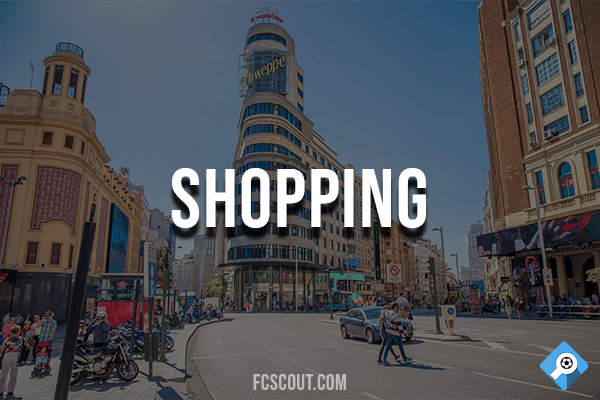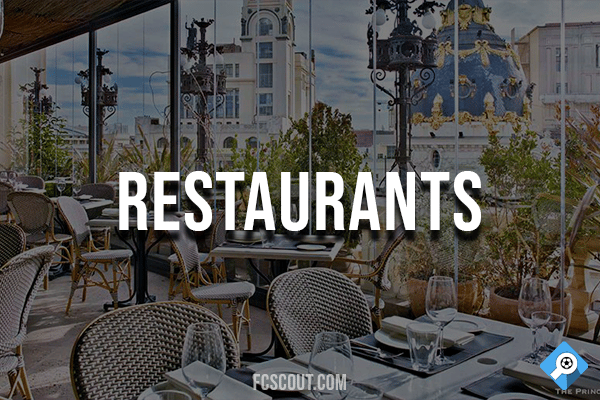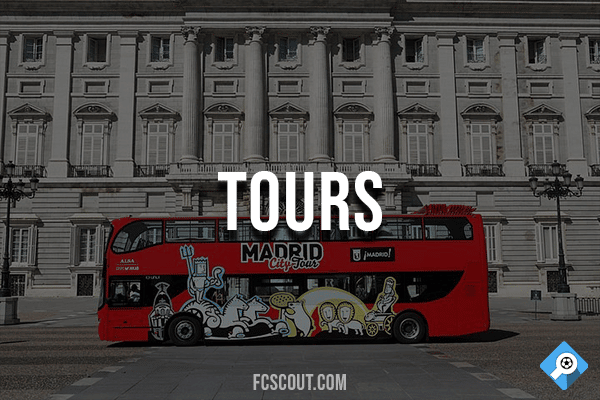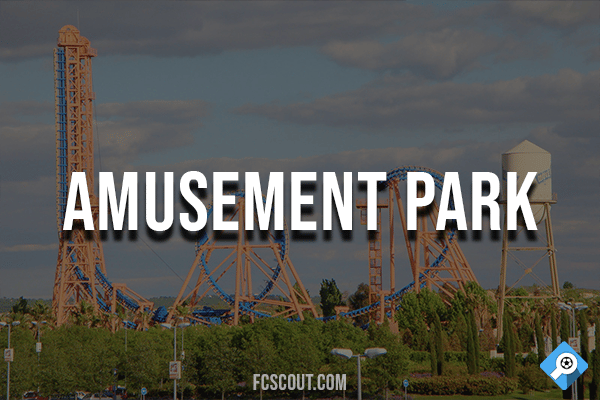VISIT REAL MADRID
Real Madrid Club de Fútbol is a Spanish professional football club based in Madrid, Spain.
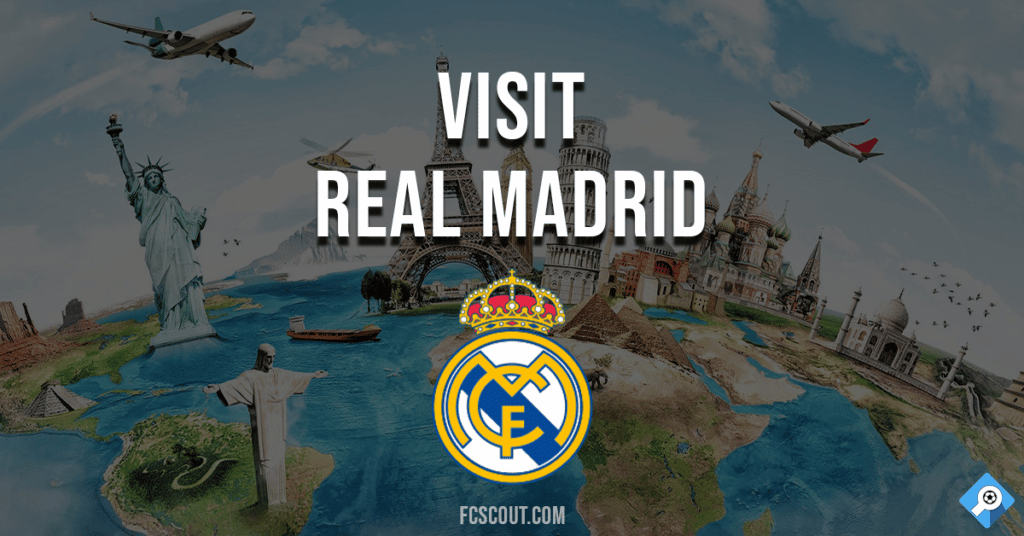
The Madrid Football Club was established on March 6, 1902, and has worn a white home uniform ever since. King Alfonso XIII presented the club with the term “real,” which is Spanish for “royal,” and the royal crown in the club’s insignia in 1920. Since 1947, the team has held its home games in the 81,044-seat Santiago Bernabéu Stadium in the heart of Madrid. Real Madrid’s members, or socios, have owned and run the club for the entirety of its existence, in contrast to the majority of European sports organizations.
With an estimated value of €3.8 billion ($4.2 billion) and annual income of €757.3 million in 2019, the club was the second-highest-earning football club in the world. The team is among the most well-liked in the entire world. Along with Athletic Bilbao and Barcelona, Real Madrid is one of only three original members of La Liga to have never been demoted from the top flight since the league’s creation in 1929. The club has many enduring rivalries, most notably El Clásico and El Derbi with Barcelona and Atlético Madrid, respectively.
In the 1950s, Real Madrid became a dominant force in both Spanish and European football after winning five straight European Cups and making seven final appearances. The club repeated this feat in the league, which it won five times in a span of seven years. Some in the sport believe that this group, which comprised Raymond Kopa, Ferenc Puskás, Francisco Gento, and Alfredo Di Stéfano, was the best team ever.
The team has won 66 medals in Spanish football, including a record 34 La Liga championships, 19 Copa del Reys, 11 Supercopas of Spain, a Copa Eva Duarte, and a Copa de la Liga. Real Madrid has won a record 26 trophies in European and international competitions, including a record 13 European Cup/UEFA Champions League victories, two UEFA Cups, and four UEFA Super Cups. They have won a record seven club world championships in international football.
Real Madrid won the FIFA Centennial Order of Merit on 20 May 2004 after being voted the FIFA Club of the 20th Century on 11 December 2000. On May 11, 2010, the IFFHS recognized the club as the Best European Club of the Twentieth Century. As of May 2018, the team has won three straight Champions League titles and four in the last five seasons, cementing their position at the top of the UEFA club rankings. Second and third place go to Bayern Munich and Barcelona respectively for Real Madrid as of 2020.
In 1912, the team finally settled down at the Campo de O’Donnell after 11 years of bouncing around. After that, the team played for a year at the Campo de Ciudad Lineal, a small stadium that could hold only 8,000 fans. A year later on May 17th, 1923, Real Madrid’s inaugural encounter against Newcastle United took place at Estadio Chamartn, where they would play their home games from that point forward. Real Madrid won the Spanish league for the first time in its history in this stadium, which was attended by 22,500 people. After a few triumphs, Santiago Bernabéu, the club’s newly elected president in 1943, determined that the Estadio Chamartn was inadequate for the club’s aspirations. A new stadium was erected and opened on December 14, 1947. The current name of the stadium, Santiago Bernabéu Stadium, was not given to it until 1955. This was the original name of the stadium when it was built. Real Madrid’s first game at the Bernabéu was a 3–1 victory over Portuguese team Belenenses, with Sabino Barinaga scoring the opening goal.
After a 1953 expansion, capacity reached 120,000. Modernizations (the last standing spaces were removed in 1998–99 in response to UEFA laws prohibiting standing during matches in European competitions) have resulted in a number of cutbacks, which have been matched to some extent by additions. There are now 81,044 seats available for use. A retractable roof is being considered. Only Borussia Dortmund, Barcelona, and Manchester United draw larger crowds than Real Madrid’s on a regular basis.
The Bernabéu has hosted the 1964 UEFA European Championship final, the 1982 FIFA World Cup final, the 1957, 1969, and 1980 European Cup finals, and the 2010 UEFA Champions League Final. ” Santiago Bernabéu is a station on the Madrid Metro’s 10 line that serves the stadium. UEFA designated the Bernabéu as an Elite Football Stadium on November 14, 2007.
Alfredo Di Stéfano Stadium was officially opened on May 9, 2006 in the Real Madrid City neighborhood where Real Madrid conducts most of their training. As a replay of the European Cup final from 1956, Real Madrid took on Stade de Reims in the inaugural encounter. Six goals by Sergio Ramos, Antonio Cassano (2), Robert Soldado (2), and José Manuel Jurado helped Real Madrid to victory in the match. Citadel Real Madrid’s training facility in Valdebebas has taken over the space previously used by the venue. Real Madrid Castilla play their home games at the 5,000-seat stadium. Alfredo Di Stéfano, a former Real Madrid player, was the inspiration for the name. Due to renovations at the Santiago Bernabéu stadium, the first team has been playing their remaining 2019–20 La Liga home games at the stadium from 14 June 2020.
Located at an elevation of 667 m (2,188 ft) above sea level and away from the sea’s cooling influence, the winters are mild. Between December and February, the city has colder temperatures brought on by cold winds blowing in from the mountains surrounding it, as well as rain, snow, and frost. There are frequent heat waves in the summer months, with average daytime temperatures ranging between 32 and 34 degrees Fahrenheit (90 and 93 degrees Celsius) depending on location, with maximum temperatures frequently exceeding 35 degrees Fahrenheit (95 degrees Celsius) and occasionally exceeding 40 degrees Fahrenheit (104 degrees Celsius).
Altitude and a dry climate make diurnal temperature swings in Madrid common, especially on sunny winter days when the temperature spikes before sharply dropping by evening. Madrid is one of Europe’s sunniest capitals.
Tourist Travel Pass
An unlimited-ride tourist travel pass lets you explore the city on foot, by train, and by bus at your own pace. In Madrid, the Tourist Ticket (also known as the Tourist Travel Pass) can be used on all modes of public transportation. It’s a convenient and cost-effective method to get around Madrid, as you may take as many trips as you like during the allotted period (1, 2, 3, 4, 5, or 7 days).
There are also two zone options, which include: zones (A and T). Zone A is the right option for you if you going to stay in the city centre. Zone B is the right option for you if you are going to be in Madrid for several days and are also planning to visit the surrounding area
Airport Express Shuttle
For five euros, passengers can travel 40 minutes to the city center by airport express from Barajas. It is open around the clock and accepts credit cards.
Getting around Madrid by Metro
There are more than 300 stations and 15 lines in Madrid’s underground system, making it easy to navigate around the city swiftly and easily.
Getting around Madrid by Taxi
As a last resort, if you’re pressed for time or simply prefer not to walk in the cold, the city has thousands of cabs at your service.
Getting around Madrid by Bus
The city of Madrid has an excellent bus system that allows you to see the sites while you commute.
Getting around Madrid by Train
The Cercanas suburban train system connects Madrid to El Escorial and Aranjuez, as well as other cities and villages in the region.
Bike Rental in Madrid
Stay in shape while you learn about the city in an environmentally conscious manner. You don’t have to bring your own bicycle!
Driving in Madrid
In Spain, toll-free national roads, autovías (toll-free dual carriageways), and autopistas (toll-free highways) are all part of the country’s road network (toll motorways). Driving on the right is the norm, and anyone approaching an intersection from the right must yield to anyone arriving from the left. On the other hand, drivers on smaller roads must yield to traffic on major highways. It is compulsory to display the environmental disc!
Accessibility
To guarantee that everyone can enjoy Madrid, especially those with disabilities, the city is working hard to improve its accessibility. Using this guide, you’ll be able to experience Madrid like a local by following eight suggested routes. To help you plan your walkable route, Madrid has included information on the walkable pedestrian route itself, including a map and a list of nearby tourist attractions and services.
Business Hours
If you live in the city’s core, most businesses stay open until 8 or 10 p.m., with the exception of those that open later. Businesses that close for lunch normally reopen between 4 and 5 p.m. on weekdays.
Restrooms
Portable public restrooms can be found on a large number of city streets. You can find these as part of the street furniture; they have an open-top baby changing table that folds out for easy access; a trash can; an exhaust fan; and a coat hanger for coats and bags. Additionally, a lamp and a window let in plenty of natural light. After each use, the floor is automatically cleaned and dried using a self-cleaning technology. People-traffic hotspots like parks and public transportation stations are common locations for them. Unisex public bathrooms are accessible to everyone, including those with disabilities and strollers. You can use it whenever you want for just a meager 10 euro cents a pop.
Electricity
In Spain, the standard voltage is 220 volts, and the standard frequency is 50 Hz. The plugs and sockets are of type F, which has two round pins and two earth clips on the side.
If you have equipment that doesn’t function with these plugs, it’s easy to find an adaptor and, of course, most hotels will have one for you.
Water
Fill your glass with water and savor the taste. It is very safe to do so in Madrid. The Madrid water is among the best in the country. Due to the fact that it is sourced from the nearby Sierra Norte and delivered directly to the locations of consumption, the quality is exceptional.
Click here to learn more about the academy and trial information for Real Madrid.
[wpgmza id=”3″]

